Overview
This blog will take you through the origin of manzanita driftwood and its sources. A brief about the manzanita tree, the types of manzanita driftwood and also about identifying manzanita driftwood.
It will also take you through the benefits of manzanita driftwood and uses in aquariums. It also explores the possibility of growing and treating manzanita driftwood at home.
Not stopping here, this blog also tells you where to buy this driftwood, gives you tips for your driftwood aquarium, and the alternatives to manzanita driftwood. Finally, about the other uses of manzanita driftwood and answers to a few common questions too.

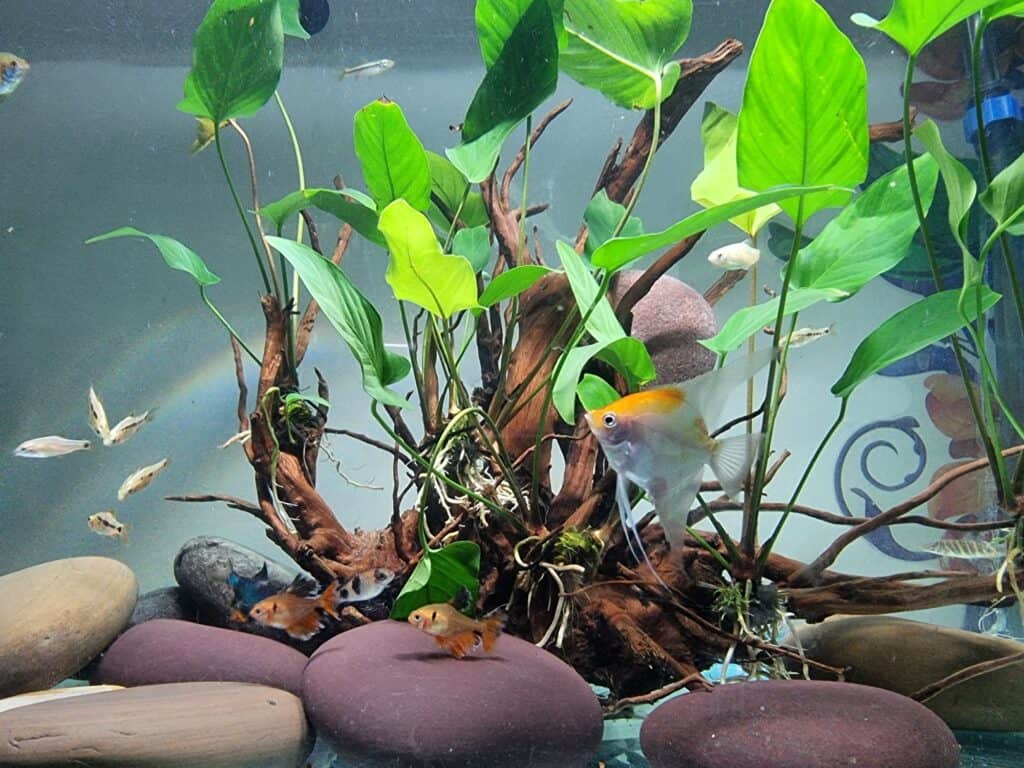
What is Aquarium Driftwood?
Aquarium driftwood is a type of decorative wood used in aquariums and terrariums to provide habitat for aquatic plants and animals. Different types of driftwood are selected by hobbyists based on the needs of their tank inhabitants, desired aesthetic effect, or both.

What is Driftwood?
Driftwood is the wood that has been washed ashore and collected on a beach by winds, waves or currents. It can be found in either natural or human-made environments. Driftwood is usually from natural areas coming from the trunks of trees which have fallen into water bodies such as rivers, lakes or oceans.
Essentially, natural driftwood is that wood which is naturally seasoned through water and sunlight. Such driftwood is amenable to usage in aquariums. Driftwood from human-made environments can come from construction sites or by artificial treatment.

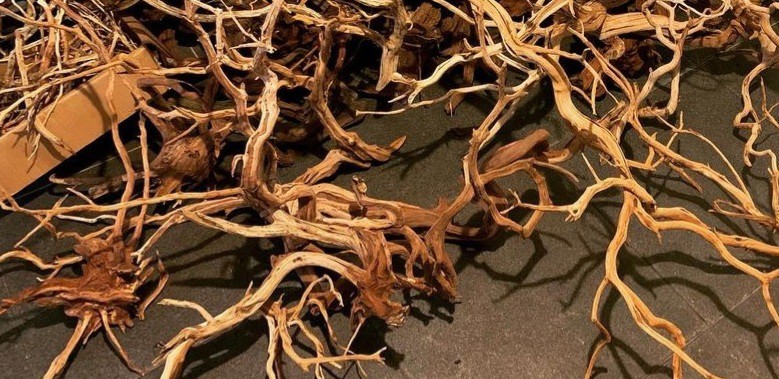
What is Manzanita Driftwood?
Manzanita Driftwood is one of the most popular types of driftwood in the world. It has many properties, uses and benefits for you to consider when choosing it as your driftwood. And while its natural colours can vary from tan to light brown or dark reds hues, they are all very aesthetically pleasing to look at with their grain patterns.
It is a good choice for your aquarium or terrarium because it has many benefits. One of the best things about this type, in particular, is that you don’t have to replace them often. Another great thing about manzanita wood is its knotty pattern which makes the aquarium set beautiful when coupled with aquatic plants.

The Manzanita Tree
The name manzanita originates from the Spanish word Manzana meaning ‘apple’. Manzanita belongs to the genus Arctostaphylos and the family of Ericaceae. In the United States it is known as the madrone. There are several species of manzanitas across the world. Michael Kauffmann explains that there are 105 species and subspecies of Manzanitas across the world. There may be more!
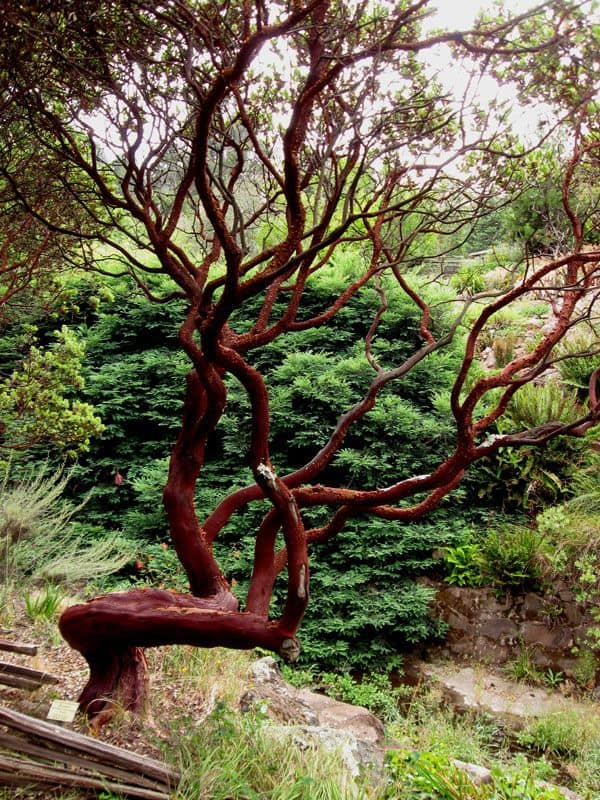
The manzanita tree is a native plant to North America. The species of the manzanita tree has been found in areas such as California, Oregon and Arizona. The manzanita tree can reach 18 – 30 feet in height. The flowers are pink in colour and have the shape of an urn as described by Charles W Kane. He also attributes medical properties to the manzanita tree.

Sources of Manzanita Driftwood
Manzanita Driftwood comes from the manzanita trees which have fallen into water bodies or been washed ashore and collected on a beach by winds, waves or currents, thereafter being subjected to the sunlight. Manzanitas are in many types: coastal manzanitas, inland/coastal tree form, interior evergreen tree type, interior needleleaf shrubs that grow only to three feet high with an open crown shape.

However, these needleleaf shrub manzanitas are not considered good for driftwood because they lack the taper and knot detail. This is important since the knots add the aesthetic value to the driftwood. The Coastal Manzanitas which are shrubs found on nearly every coastal mountain range in Southern California, including the Santa Monica Mountains. Sometimes they are also called Mountain driftwood.
Manzanita trees take a long time to grow. They need a large open area with lots of sunlight and deep soil to thrive in. Once, they are established they are quite drought tolerant. You’ll also want the soil pH to be neutral or acidic for these types of plants to survive!
However, they are known to be a fire hazard and not advisable to be planted in constricted places or near houses. In some places, it is even illegal due to its potential as a fire hazard. As an aquarium lover, one would want only reasonably sized wood to be used as driftwood and not a whole tree.
Therefore, although not impossible, it is preferable to buy the driftwood from a store. If you divide the cost of a branch by four years which is the approximate life span of the driftwood, it would not even amount to one dime a day.
Compared to the cost of growing the tree, using fertilizers, waiting for its growth and other incidental expenses, purchase would be the optimal option. Alternatively, if can find manzanita from a natural source which is just enough for your tank, it the best that can happen.

Types of Manzanita Driftwood
There are three different types of manzanita driftwood you’ll find, which can be used for certain purposes in your aquarium. These include the following:
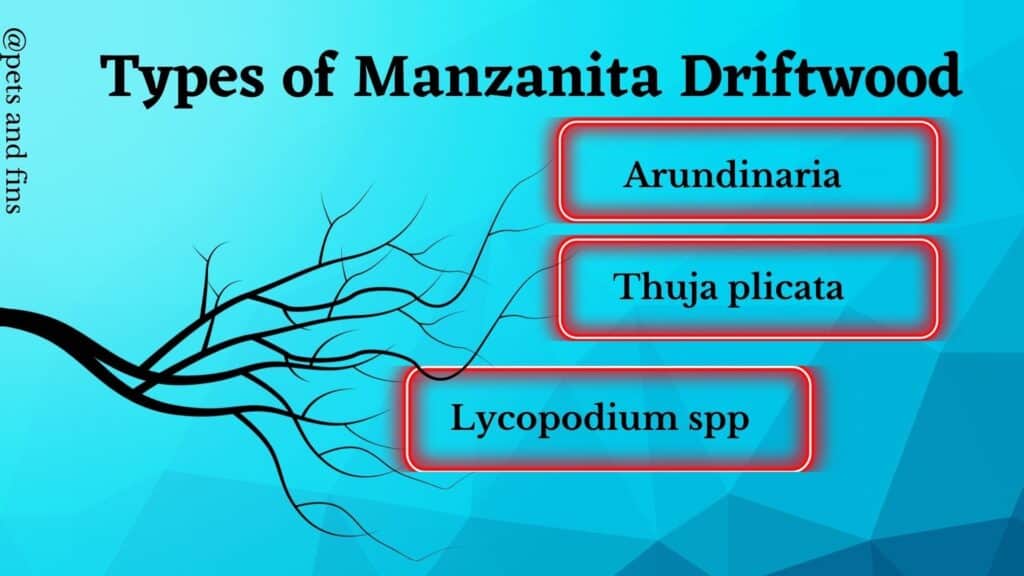
There are three types of Manzanita:
- Arundinaria
- Thuja Plicata
- Lycopodium SPP
Arundinaria – This type is most commonly used to give a more natural look to fish tanks and will release tannins into the water column. This type of driftwood is also usually soft and easy to work with when cutting because it does not have a lot of spiky edges on it.
The second type, Thuja plicata – It’s best used as a background piece in your aquariums or to make caves for fish that need them. These pieces of Driftwood will not release tannins into the water column. Although this type can be harder to work with than Arundinaria, it is usually really thick and heavy and makes a great background piece for your aquariums.
The third type is Lycopodium spp – It’s best used as an accent in your aquariums. These pieces of Driftwood release very less tannins into the water column and can be used to create a canopy for your aquarium or as accents in planted tanks.
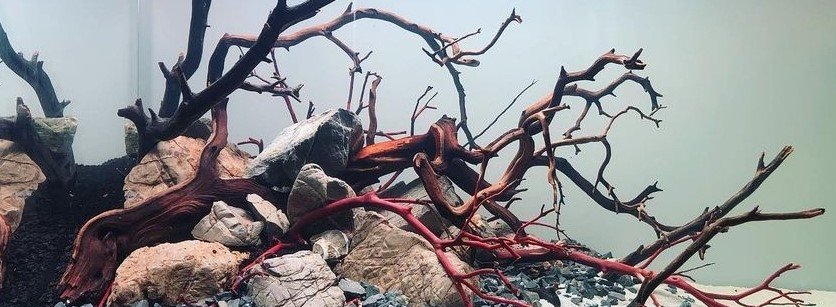

Benefits and Uses of Manzanita Driftwood
Manzanita wood is typically long lasting and makes it a good choice if you’re looking for something cost effective. It can be found in different shapes and sizes, but it’s usually brown or grey.
The wood is porous which makes it ideal for absorbing water and minerals from the tank. It is a great way to show off your aquarium tank as it can make the fish in them seem more natural.
Additionally, there is another benefit to using manzanita driftwood that many don’t know about which is its ability to absorb heavy metals such as copper which comes through the medicines that are used. Manzanita does not tea colour the water despite the release of tannins. It soaks fast and does not need rocks to hold it to the bottom of the tank. The minor amounts of tannins released help keep the nitrates at safe levels.
It also helps lower the PH levels if the water you use has naturally high PH levels or you have been using PH controlling substances. Otherwise, it is best you check your PH Levels regularly and use the Thuja Plicata type of Manzanita to balance the PH.
Manzanita driftwood helps maintenance of the tank without relying on artificial chemicals like copper or chlorine tablets. This is especially helpful if you don’t have a lot experience maintaining freshwater aquariums but want them.
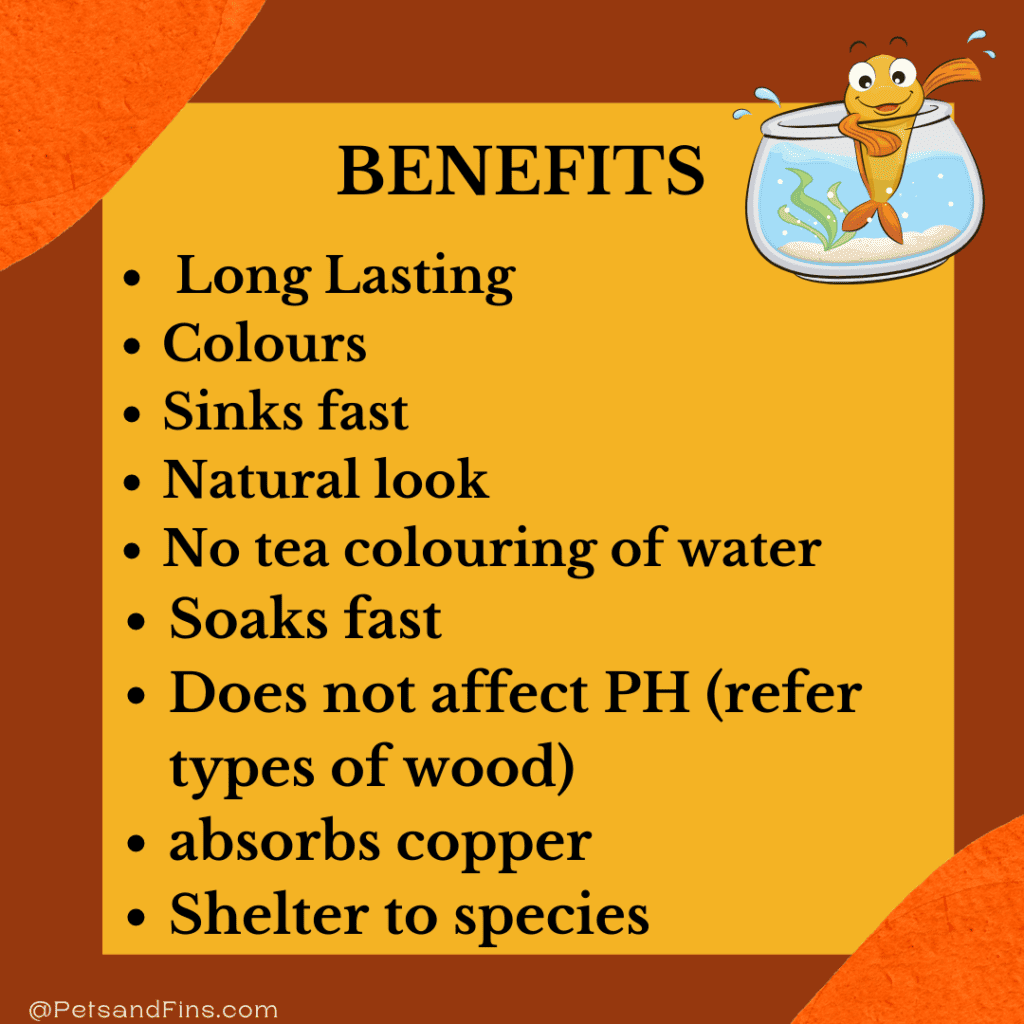

Brown Manzanita Driftwood – Brown manzanita driftwoods come from the Northern California coast and often have a very rich coloration that looks great against green plants or black gravel substrate found in many tanks. They also have a very mellow flavour that helps to reduce the impact of fish foods or other chemicals in your tank.

Black Manzanita Driftwood also provides shelter for some species of aquatic life such as crayfish and shrimp so they don’t get eaten by other animals or die from lack of oxygen. This means that not only are you helping maintain water quality but you are providing homes for other important creatures who may have none otherwise.
Black manzanita driftwoods are usually from Oregon and come from the coast lines there. These types of driftwoods look amazing when placed against white sand substrate found in many reef themed tanks.

Greyish Green Manzanita Driftwood – Greyish green manzanita driftwoods are from the east coast of America and is often used by people who want to add in a natural looking type of wood that has an interesting contrast to other materials found in their tank like black gravel or dark coloured rocks.
The coloration on these types of wood can vary wildly depending on where they come from but many have some sort of grey tree bark patterning with light brown branches as well, which make them perfect for those who would rather not use rock work in their tanks!


How can you Identify Manzanita Driftwood?

Manzanita wood has distinct colours which varies from tan to light brown or dark reds hues. The weight of this type is typically between 65-80 pounds per cubic foot (pcf). The first step when checking if your piece of wood is actually manzanita driftwood is to break off a small piece of the bark.
If it is manzanita, you will notice a light pinkish-brown color under the broken off section (the wood should be brown to begin with).
The second step when checking if your piece of driftwood is actually manzanita driftwood is by breaking off a larger chunk on the surface and then looking at its cross-section or cracks.
Manzanitas are characterized by their unique knots which make them different than other types of trees that have just one knot per board foot compared to multiple knots in each inch! These knots create an appearance called “burl”, meaning they’re usually found near branch bends where there were compression forces acting during growth. Some people also say burls look like brains.
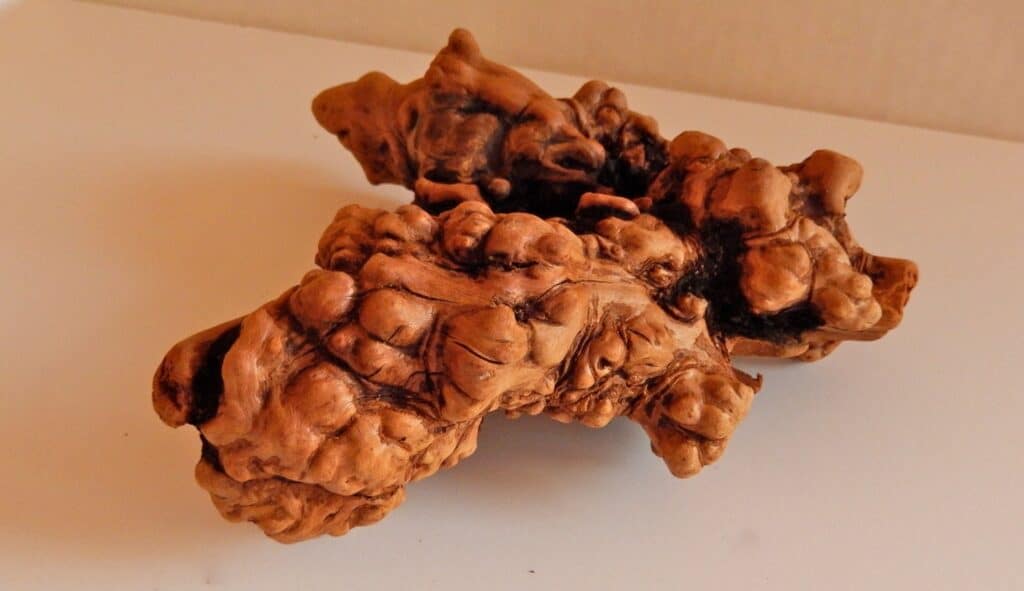
The third step is to take a whiff of the wood. If it smells like fresh-cut apples then you definitely have manzanita driftwood! Other woods may smell differently and are not as rare or expensive – this should help you narrow down your findings.
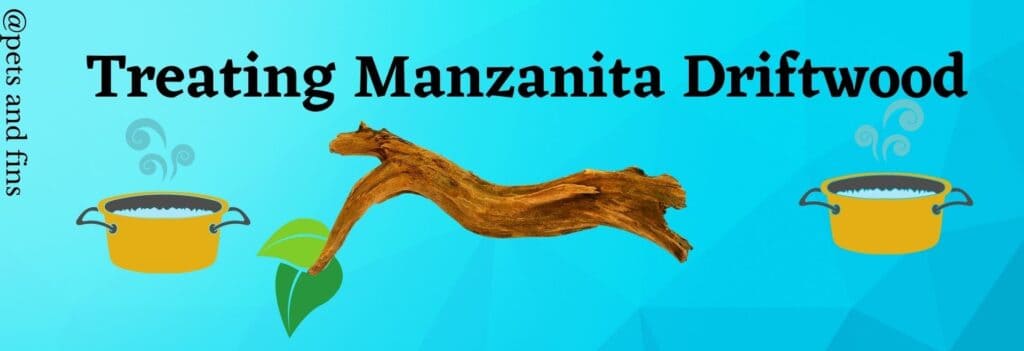
Treating Manzanita Driftwood
Manzanita driftwood has to be brushed and rinsed thoroughly (with just plain water) to take off all the dirt. and thereafter treated by soaking it in hot water for about six to eight hours and then in luke-warm water 24 hours. If you have a large container, the sinking of the manzanita is indicative of sufficient treatment.
Ensure that you do not keep the soaked wood in sunlight as it aides the growth of algae which is not good. This also prevents temperature changes that could introduce pests like insects. It’s important not to over-soak the wood because this can cause bacteria growth and damage your fish tank. There is no need to treat these pieces with chemicals as they are 100% organic!”
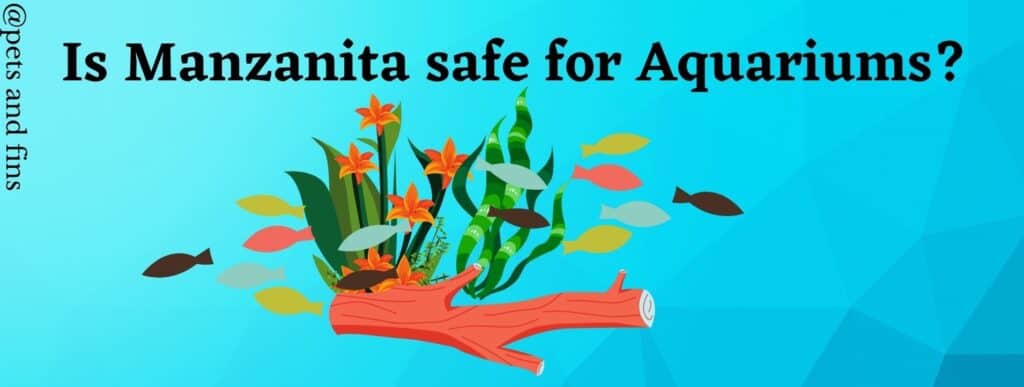
Is Manzanita Safe for Aquariums?
All types of fishes can be placed with manzanita driftwood and they will be happy with this type of wood in their environment. Manzanita driftwood is a good choice for an aquarium because it lasts longer than other types and looks nice as well! It typically lasts for about four years before decomposing so that makes it a good choice.
The wood is porous which makes it ideal for absorbing water and minerals from the tank. It is smooth and does not hurt the fish. It is not poisonous, and safe to use in the aquarium since it does not materially affect the water. It does not contain any oils or resins.

Manzanitas are very popular in aquariums because of their unique knots. These natural pieces provide a sense of realism that many tanks lack. Another benefit to using these types of wood is that it helps prevent algae growth due to the rock-like texture and tight spaces between each knot which provides no access for life or light necessary for photosynthesis.

Manzanita Driftwood – Its Other Uses.
If you ever decide to change the setup of your tank and the driftwood is still in-tact, Manzanitas make excellent pieces for many different things, such as furniture (especially tables!), artworks, crafts, home decorating projects etc. The colours that can be seen in these natural pieces include shades of green and brown which compliment any setting with their rustic charm.
They also add an organic feeling to a room without adding too much clutter if placed well. Manzanita Driftwood can also be placed outside to create an interesting garden feature and used as an accent piece to add interest to water features, such as ponds or fountains.

Manzanita Driftwood – Alternatives
The commonly asked question is what wood can be used as driftwood? There is a wide range of types of wood one could use for driftwood, not only manzanita! Other trees and plants which can be used include cedar (very dense but a little more expensive), oak (less dense) as well as willow.
You will also find Sumatran driftwood, Bogwood, Red moor Root wood, Cholla, Tiger, spider wood and even Bosai Trees. There are more. Each of them provides a very different aesthetic setup for your aquarium.

Common Questions
Where can you buy Manzanita Driftwood?
You can find Manzanita driftwood on amazon.com. Here is the link.
Amazon.com : manzanita driftwood
Alternatively, the most recommended website is Manzanita Direct.
Manzanita Driftwood | Premium Driftwood for Aquariums & Reptiles (manzanitadirect.com)
Where Can I Find Manzanita Driftwood?
The Mazanita River is one of the most popular spots for finding mazanita driftwood. It’s located in Humboldt County, California and flows from inland rainforest to coastal redwoods forests on its way northward before reaching into Oregon. You can find both whole logs as well as branches that have fallen off trees.
There are a lot of different spots to find Mazanita driftwood in Humboldt County. The mouth, or entrance, of the Mazanita River at its northernmost point is one place you can go and explore. You’ll also be able to see the gorgeous redwoods forests that grow on either side of this area.
Nearby, you can explore the hummocks in the mudflats along the Pacific coast–these are areas where waves have pushed up blocks of sand and created woody mounds that form an underwater forest. You might also want to try digging for mazanita driftwood in the Humboldt Bay near Eureka.
This is a major fishing area, and you’ll be able to find logs that have been thrown out by fishermen who are looking for something else!
Is Manzanita Hardwood or Softwood?
Manzanita driftwood falls in the category of hardwoods because it has a higher density and hardness. Manzanita does have some variations depending on where you find it from but as long as most pieces are 12-25% softer than oak they will be considered manzanita driftwood.
Is it Illegal to Cut Manzanita in California?
In the state of California, manzanita is protected under law and cannot be cut. This is a plant that has been used by Native Americans for many centuries and is often associated with their culture. It was only in 1986 when it became illegal to cut manzanita.
Manzanita can grow up to 20 feet tall and has a diameter of 3-6 inches; its bark can range from red, brown or grey colours depending on where it grows in relation to the sun.
The law that was put in place to protect manzanita is RCW 15.36.170 which states: “It shall be unlawful for any person or persons, firm or corporation to cut down, girdle, kill, injure or remove from the state alive any tree of the genus Arctostaphylos.” Violating this law can result in a $500 fine.
This does not mean you cannot pick fallen branches. Make sure you do capture pics before you take the wood which would be a wise option to establish the tree wasn’t cut.
How long does it take for Manzanita to sink?
It can actually depend on a lot of different factors. First and foremost is what type of substrate you are using. If your substrate includes sand or large pieces that will cause any manzanita wood (or other organic materials) to float then it will take a lot longer for it to sink. Another major factor is the amount of water in your tank.
If you have less than an inch or two, then there will be very little buoyancy and any manzanita wood will sink quickly on its own accord. However, if you have six inches or more of water (and even more if your tank is full) then the wood will need to be weighted down with something heavy or else it will float on top. Manzanita driftwood will eventually sink because it has no air pockets inside and will gradually become waterlogged over time.

